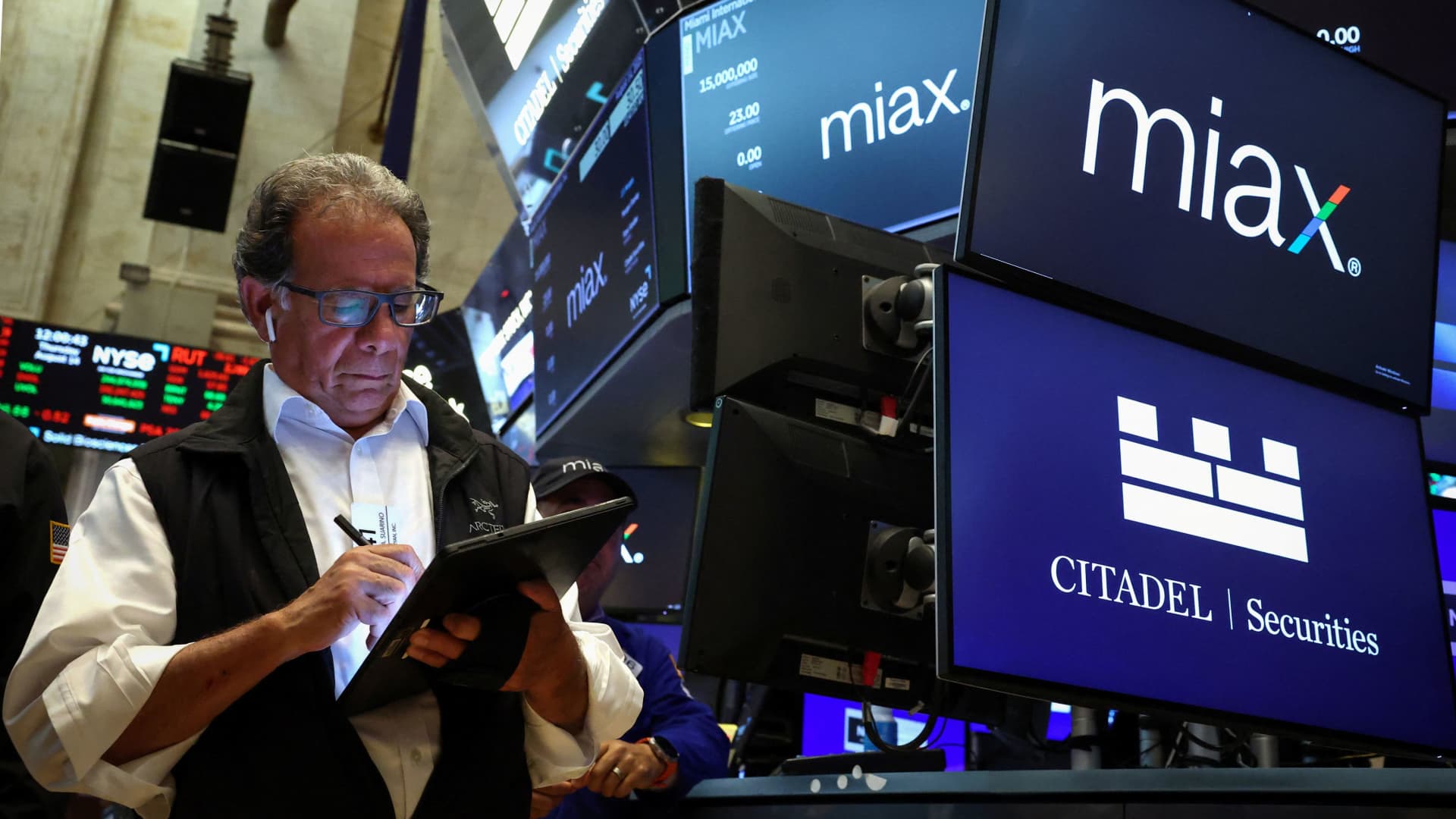(These are the market notes on today’s action by Mike Santoli, CNBC’s Senior Markets Commentator) A scorching wholesale-inflation report for July forces a short detour on the path to the sure-thing Fed rate cut next month that markets have been fixated on in recent days. While the internal details of the PPI report were noisy and not entirely indicative of a tariff-driven inflation reacceleration, Treasury yields rebounded sharply and the sectors of the market that had been celebrating easier Fed policy since Tuesday’s mild CPI reading have disgorged gains: Russell 2000 down more than 1.5%, consumer cyclicals shedding more than 1%, homebuilders off 2%. Still, these declines in each case account for less than half of their weekly gains and the broader reaction by the equity market has been to rotate rather than beat an outright retreat. The Nasdaq-100 was flattish with the quality/defensive mega-caps again acting as a shock absorber, even with three-quarters of NYSE volume in declining stocks and almost as many new 52-week lows as highs on the Nasdaq. For a second day, the S & P 500 found traction exactly at the level where it closed Tuesday after the CPI-release/rate-cut-hope rally, with tactical traders trying to hold that line. For as resilient and hard-to-rattle as the market has been, it’s tough to deny that the four-month rally since the April lows has priced in benign outcomes across several fronts: moderate/diffuse tariff impact, sustainability of AI capex, ability of growth stocks to hold their valuations (Nasdaq-100 almost back to post-pandemic peak of 28 forward P/E) and a Fed resuming rate cuts for “good news” reasons. From one angle it’s odd that there is such a drumbeat for the Fed to cut rates when the S & P 500 just made its 17th record high of the year, Bitcoin is zooming, credit spreads are near historically tight levels, speculative retail-trader activity is manic and the Federal fiscal impulse remains undiminished. There’s a case for looking through tariff-driven goods-price bumps, and the July payroll report was a warning on the labor market for sure. But the stakes around the September Fed decision seem lower than the pitch of the debate around it would suggest. Has volatility bottomed for now ? VIX traded near 14, a six-month low, while “realized vol” – the actual experienced annualized volatility of the S & P 500, just perked up from rock-bottom readings near 6 to 10 or so. Larry McMillan of market-strategy service McMillan Analysis says this is a potential short-term sell signal for stocks. Though it’s not enough to override the still-supportive action of the index itself just yet.





